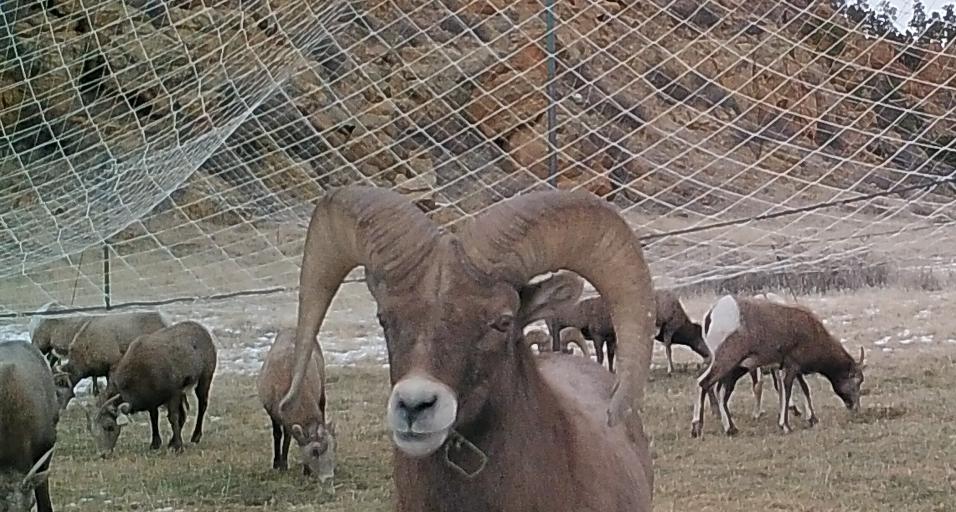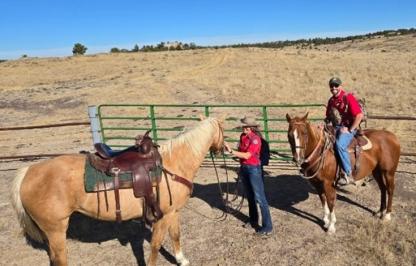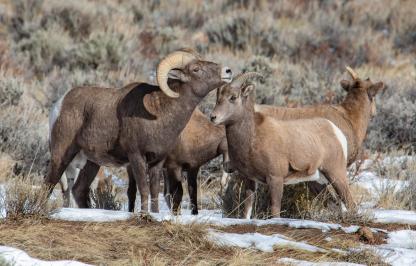The Elk Mountain Bighorn Sheep herd resides on the Wyoming/South Dakota Stateline southeast of Newcastle, Wyoming, and has been managed jointly by the Wyoming Game and Fish Department (Department) and South Dakota Game Fish & Parks for 18 years. The Wyoming portion of the herd falls within Hunt Area 20, and the South Dakota side lies in South Dakota bighorn sheep hunt unit BH2. This bighorn sheep herd has been hunted since 2008, and currently, six licenses are issued annually, with three any ram tags valid in South Dakota and three in Wyoming.
The three-year Elk Mountain Bighorn Sheep Sightability Project aims to develop a helicopter-based model to estimate bighorn sheep numbers in the Black Hills, specifically on Elk Mountain. The Department is conducting the study in tandem with South Dakota Game Fish & Parks. It entails capture and very high frequency, or VHF radio-collaring of 40 bighorn sheep, disease testing of captured sheep, helicopter and ground-based surveys of sheep, and a model to estimate the population from a helicopter compensating for topographic and vegetative cover that results in sheep not being detected.
Garnering an accurate population estimate of this herd is vital to its management. Two methods have been tried with limited success: A ground-based survey relying on radio-collared bighorns was developed as part of a graduate student project in 2013. This method has produced estimates with very wide confidence intervals that limit its utility and completing the number of surveys needed each year has proved difficult. In addition, securing access across private lands for data collection in Wyoming has become impossible without paid access agreements, and this technique requires ongoing radio-collaring efforts. A forward-looking infrared (FLIR) survey was attempted in June 2018 to replace the ground-based survey. However, the FLIR system was not able to effectively detect bighorns in the Black Hills.
We are now in the second year of the sightability project, and it has been much more successful than the first. Last winter, we were only able to collar three ewes. This was because the mild winter resulted in sheep quitting the bait site, seemingly every time we got ready to trap. In addition, we did not have expandable collars and so could not collar rams.
This winter, things were much improved. After three successful drop netting efforts, we managed to get a total of 21 ewes and five rams “on air.” Then, we were able to contract helicopter capture with Native Range Capture Services and, in short order, collar 12 more rams for a total of 38 collared bighorns. We hope to deploy the last two collars by darting sheep as the opportunity presents itself. Another bit of good news, disease testing of all the captured sheep to date has not revealed any significant concerns. Although, we are still awaiting lab results from the 12 rams recently captured.
Next winter, we will begin model development and, hopefully, moving forward, have a new tool in our box to estimate sheep numbers in this part of the country. That can’t come too soon, as we have struggled recently to get a good handle on the numbers of sheep in this population and how they are trending. But, we still expect to continue with 100% hunter success in the coming year, success that has yielded some truly quality rams.
Elk Mountain Bighorn Sheep Sightability Study



